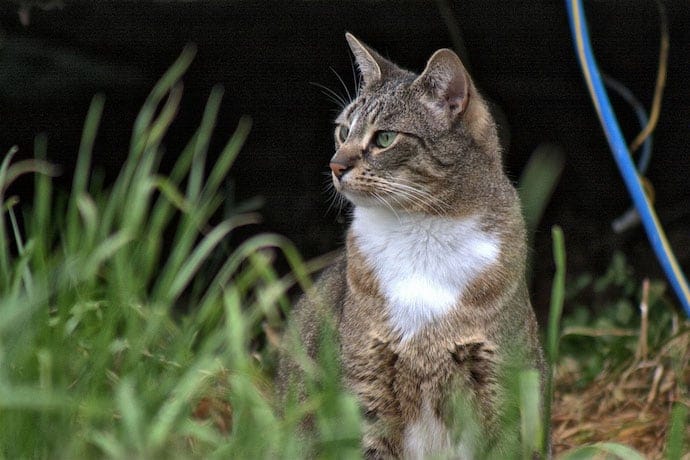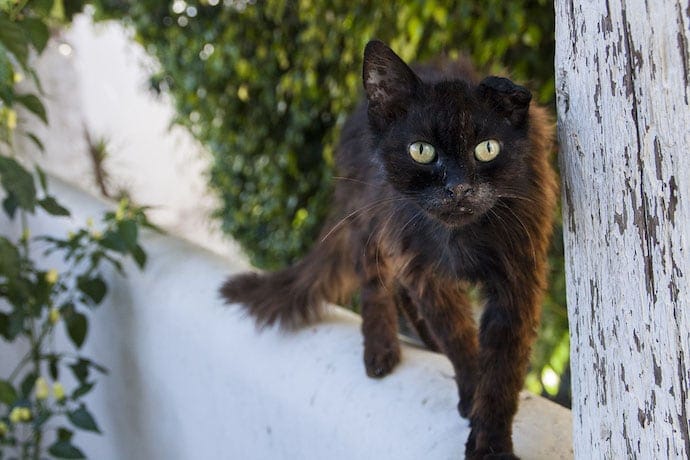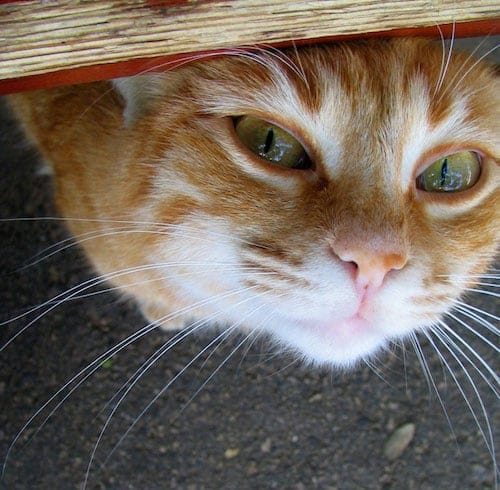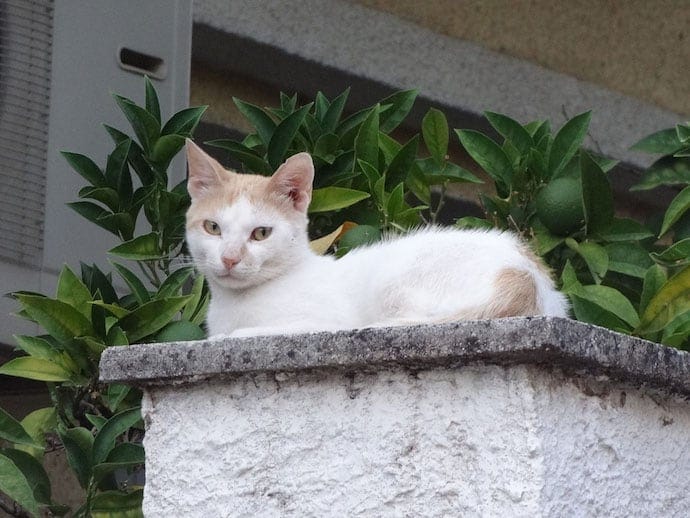
Feral cats typically live short and difficult lives.
They’re the skittish cats who scatter when approached, or the ones that hiss and attack if they’ve been driven into a corner. These are animals that have had virtually no contact with humans, so be patient and understanding.
While it may not always be possible, here are techniques you might be able to use to coax domestication.
Cats in the wild view any animal larger than themselves as a threat and as a predator. Playing ‘the long game’ with positive interaction is key in your attempt to domesticate any feral cat. If you try to catch one, the cat will fight for its life. If you trap one, you risk the cat hurting itself. Either way, the cat will have a complete distrust for humans and you’ll be back at square one.

Start by Meowing at it
Yep: sounds crazy, but it’s a sign of non-aggression among cats. Coming down to their level by sitting will allow the cat to observe you better. Keep your distance and never approach the cat. Resist the urge to look at its eyes, as this is a sign of aggression in cats. If you want to look at them, keep your eyes on their backside. Slow blinking is a great way to put a cat at ease. Don’t worry though! The distances will eventually get smaller and smaller.
Treat them with some food
Any animal is easily swayed with sustenance, so you need to make it known that you are the bearer of food. Make a specific sound (or use a clicker) whenever you feed a feral cat. You can feed them small amounts of food throughout the day if you'd like, or just once or twice. The choice is up to you.
After some time, when you put the food down, walk away and sit down within view of the bowl. If a cat starts eating in front of you, you’re doing great. Be certain not to bring the food towards the animal. Set it down and walk away, friend.

After a few weeks of this behavior, whenever you bring food outside, place it inside of a crate. This keeps a boundary between you and the animal. Keep the door open. After a few weeks of successful ‘crate time’, place a piece of your clothing inside of the crate.
The First Successful Step
Allowing the cat to familiarize itself with your scent is important, especially before attempting to extend your hand towards it. Many people say that the first successful step towards petting the animal involves rubbing your hands over a stick and allowing the cat to rub its face against it. Do that for a few consecutive days and feed the cat at the same time. You can rub the cat on its head, but always through the crate!
Read Their Body Language
Cats are often similar: depending on body language, you will know if you can outstretch a finger through the crate, or keep it to yourself. When he or she is relaxed enough, you can attempt to pet them as they eat. Do not attempt to stroke the cat’s head first, as you may frighten the animal. If they seem nervous, pull your hand back and try again another time.

When it comes to luring a cat into your home, you need to make sure that the decision is entirely the animal’s. Place food closer and closer to the doorway until the cat comes inside and begins to check everything out. Make sure the house is calm and quiet!
Note: if you already have cats in your household, you need to test a feral cat for FeLV, FIV and worms. Make sure that they don’t have fleas as well, or you’re in for a real adventure.
Creating a ‘Safe Space’
Create a ‘safe space’ for the cat, in an area that allows for the cat to run away and hide simultaneously. Remember that this area should only really be used by the person taming the cat. Don’t attempt this training when you have small children around or local construction going on. Once you start integrating the feral cat into your home, you need to continue a feeding time routine.

As for the litter box, don’t stress if the cat has an accident. Simply move the box over the spot that they used or, if it was a solid mess, put that in the box and allow the cat to put two and two together. A corner is a perfect location for a litter box. Don’t put it in the middle of a room or near a food dish, and never get angry at a feral cat for making a mistake.
Have Some Playtime with Your Cat
Playing with a feral cat will create a stronger bond. Dangle strings and catnip-filled mice near them. Maybe they won’t be interested at first, but with a little persistence, they should be wiggling their butt as they attack tinsel balls.
Even though you may struggle for months, you may never get yourself a 'lap cat', but there's a large chance you can rescue a feral cat from the traumatic, difficult life it's accustomed to. Good luck with the transformation process, and let us know how your training is going!

Was this article helpful?
Help us make our articles even better









